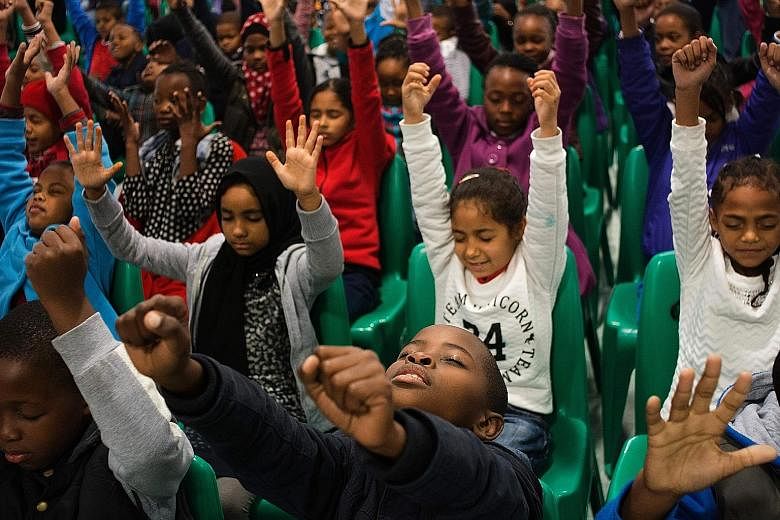NEW YORK • Some 263 million children worldwide, nearly one in 10, do not go to school, posing a daunting hurdle to the United Nations' (UN) efforts to educate all children by 2030, the UN's cultural agency Unesco reported yesterday.
The number is "staggering", yet marks an improvement from 2000 when some 374 million children did not attend school, Unesco said.
Many children out of school live in areas of conflict, many are girls living in societies that do not advocate educating females and others live in countries that do not make secondary school compulsory, the report said.
Children in their late teens are four times more likely to be out of school than younger children, it said.
"Our focus must be on inclusion from the earliest age and right through the learning cycle, on policies that address the barriers at every stage, with special attention to girls who still face the greatest disadvantage," said Unesco director-general Irina Bokova in a statement.
In South Asia and sub-Saharan Africa, at least half of all those aged 15 to 17 are not in school. In South Asia, these teenagers of upper secondary school age are eight times as likely to not be in school as children of primary school age.
UN member nations last year adopted a set of global goals for 2030 that included a call for children around the world to complete primary and secondary school.
"These new findings show the hard work ahead if we are to reach this goal," Ms Bokova said.
Armed conflict poses a major barrier to education, Unesco said. Around the world, 22 million out-of-school children of primary education age live in conflict areas.
Last month, Unesco said children who are out of school in conflict- affected countries need US$2.3 billion (S$3.09 billion) to get them all schooling - 10 times the amount of aid that is currently directed towards education.
"Present targets are hugely insufficient and diverting attention from the true needs of children and youth on the ground," said Mr Aaron Benavot, director of Unesco's Education for All Global Monitoring Report.
In some places, refugees are integrated into national education systems, but in others they are excluded, depending on their nationality.
Ms Bokova said funding for education is crucial in these areas.
"Education must be seen as part of the first response when crisis hits. Returning to school may be the only flicker of hope and normality for many children and youth in countries engulfed in crises," she said.
While primary and lower secondary education are compulsory in nearly every country, upper secondary school is not, Unesco noted. Also, it said older children are often of legal working age.
Globally, 15 million girls of primary school age will never attend classes compared with about 10 million boys. More than half of those girls live in sub-Saharan Africa, it said.
The gender gap is also wide in South Asia, added Unesco. Four out of five out-of-school girls will never enter the formal education system, compared to two out of five out-of-school boys, it said.
REUTERS

